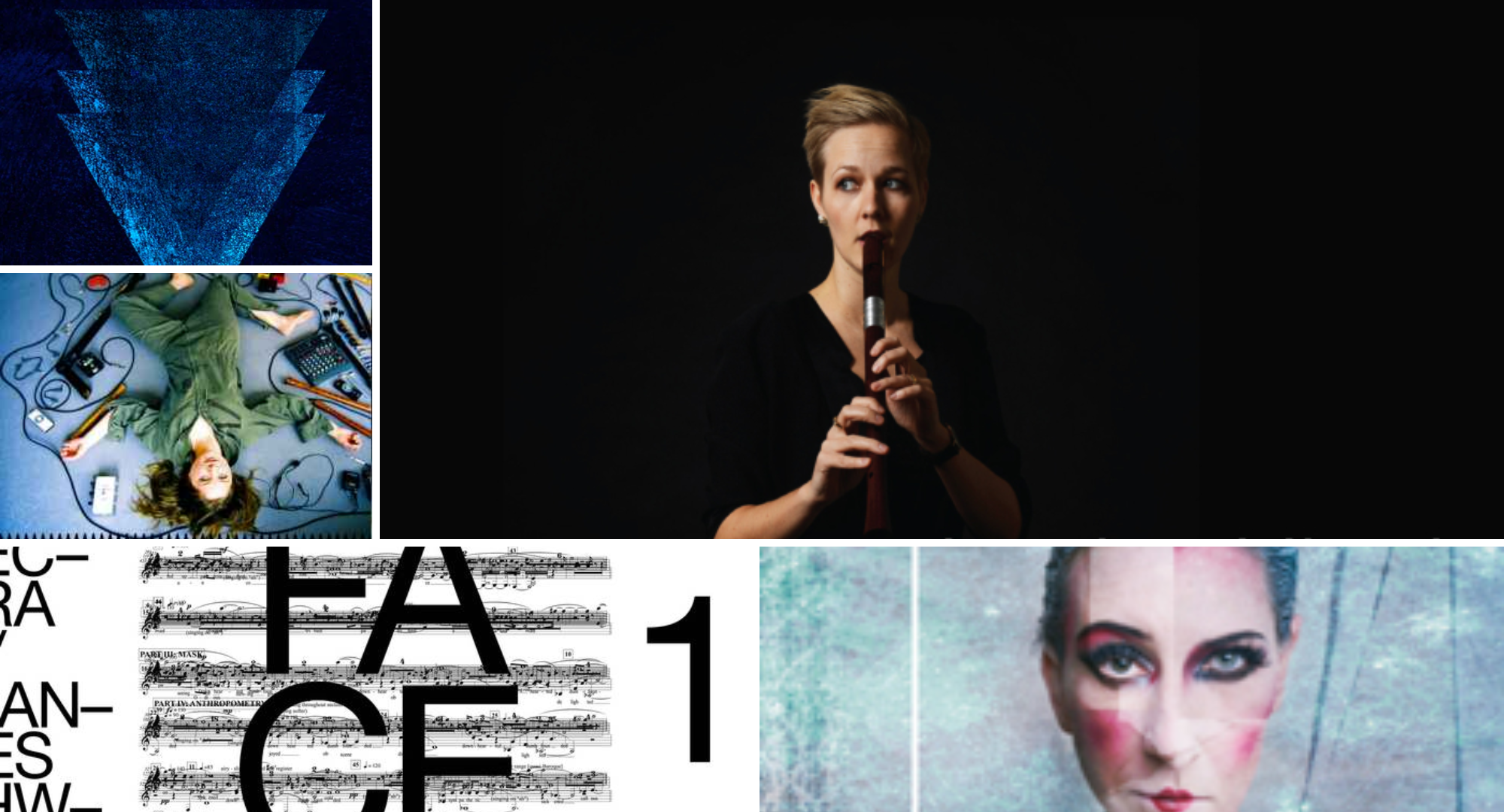The recorder is a weird instrument. In the US, most of us have images of plastic sticks with holes that shrieked Hot Crossed Buns. The reality is, the recorder is hundreds of years old with the first recorded music published for it dating to the mid 1500s. It is so sensitive to air pressure that crescendoing too quickly will change the pitch, but the embouchure (what your mouth does when you play an instrument) is so relaxed that doesn’t require the same workouts and upkeep as other wind instruments. Because this instrument is so old, performers and ensembles have over 500 years of music to choose from, including the increasing number of contemporary works written. This week we are going to look at a few newer works – some solo pieces and several with recorders in a chamber ensemble. Enjoy!
To make sure these playlists delivered to your inbox every week, sign up for my newsletter.
I give this playlist a Difficult Listening Hour rating of 7.5/10.
1. Vermont Counterpoint by Steve Reich arr. and performed by Sarah Jeffery. Album: Constellations. NOTE: Not available for the YouTube playlist. From Sarah about this album, “The main inspiration has been the process of arranging Steve Reichs minimalist masterpiece Vermont Counterpoint for the recorder, a project that has spanned a good few years and that I am proud to present here. We can see minimalism apparent in medieval canons, in Renaissance ornamentation, in fantastically diverse contemporary works, and in (not so) traditional folk music.The title Constellations refers to these discrete clusters of sound worlds each light years apart yet sharing similarities across the distance. Gradually shape-shifting in our perception, the more we pay attention. Tangible pinpoints of light that beckon the eyes, and ears, to follow.”
2. Click & Pitch by Toek Numan performed by Susanna Borsch. Album: Off-limits. About the performer, “A recorder virtuoso familiar with both contemporary and early music, Susanna Borsch is one of the few instrumentalists able to bridge both styles of music with complete ease. Susanna’s first solo cd off-limits featured several new works composed especially for her and the combination of recorder with live electronics, and received critical acclaim from all quarters when issued in 2006.”
3. Beast Calls: Susi Spinus wins a prize by Terri Hron and performed by Susanne Fröhlich. Album: Susanne Frohlich: 21. From the composer, “Beast Calls is a collection of pieces that I started back in 2009, when I started to translate sounds of animals I had recorded into scores. These translations take various forms, sometimes analyses using digital tools yield pitches or rhythms, sometimes I transform the sounds using other digital tools and use them in the electroacoustic part, if there is one. Beast Calls: Susi Spinus is the most recent of these works, written for Susanne Fröhlich, uses the sounds of Siskin birds that live in a room in her house. It also features a new model of recorder — the Helder Tenor — which Susanne has been helping to develop and whose extended possibilities in terms of dynamics and timbre she has been exploring.”
4. Austro by Giorgio Tedde performed by Louise Hjorth Hansen. Album: A Short Story This work is for for alto recorder and reverb.
5. The Narrow Way by Timothy Cooper performed by Ensemble 1604. Album: shadows that in darkness dwell. “Timothy Cooper’s shadows that in darkness dwell is a deep dive into the darker side of John Dowland’s music. Exploring the man and the music through period instruments and electronics a somber character is created, with the occasional ray of bright, fantastic light peering through.”
6. Recorder Concerto by Dai Fujikura performed by Jeremias Schwarzer and the Bamberg Symphony. Album: New Recorder Concertos. “My starting point for this concerto was to research and explore the recorder’s unique attributes. I found that the articulation of the players can be directly magnified by the recorder, so I thought I should make a piece in which the string orchestra functions as an amplification of the articulations which come from the recorder. In other words, everything in this work originate from the mouth of the soloist. I also had an image that the recorder player is playing somewhere in the desert and a simoom starts and blows the sands around him, sometimes entangling the recorder sometimes leaving it, sometimes returning.” -Dai Fujikura (edited by Harry Ross)
7. Gesti by Luciano Berio performed by Lucia Mense. Album: The Complete Sequenzas, Alternate Sequenzas, and Works for Solo Instruments (mode161-163). From the liner notes, “Luciano Berio greatly enriched the repertoire for solo instruments and voice with his series of sixteen Sequenzas and works such as Psy, Gesti, Rounds and Fa-Si. Written between 1958 and 2002 and spanning almost five decades of Berio’s creative career, these solo compositions reflect some of his most crucial aesthetic ideas and compositional techniques.”
8. Dance macabre (quartet version) by Dorothée Hahne performed by Quartet New Generation. Album: in vain – von der Vergänglichkeit.
9 – 14. Face by Yannis Kyriakides performed by Electra. Album: Face. The composer writes about this work, “face is a multimedia composition for voice, violin, recorders, piano, live electronics and video, based on notions of face, not only as a manifestation of emotion and identity, but as a data set to be collected and used by external powers. The piece navigates between the problematic practice of anthropometry in the early 20th century, specifically the measurement of cranial features to determine character types, to the current use of emotional face recognition software to collect data about the emotional engagement of consumers.”
15. Parterre (version for recorder) by Mary Ellen Childs performed by Quartet New Generation. Album: Fantasy n Symmetry. About the composer, “Mary Ellen Childs has been acclaimed for creating both rhythmic, exuberant instrumental works and bold, kinetic compositions that integrate music, dance and theater in fresh and unexpected ways. She has created numerous “visual percussion” pieces that embody the concept of music in motion, for her ensemble CRASH. Her repertoire includes Click, a fast-paced, game-like work for three stick-wielding performers; DrumRoll, for four drummers on wheels; Sight of Hand, based on uniquely American forms of body percussion—girls’ clapping games, hamboning, and baseball coaching signals —and Crash, a full-evening work for 6 crash cymbal players on rollerstools and various other rolling means of transportation. The Village Voice deemed Click “a newly born classic, like Steve Reich’s Clapping Music, only a thousand times more virtuosic.”
16. Een paard met vijf poten by Chiel Meijering by the Amsterdam Loeki Stardust Quartet. Album: Pictured Air: Contemporary Quartets. A little too much about the composer, “Chiel Meijering, 1.96 tall (6.42 Feet), dark brown eyes, bloodgroup AB positive, is a Dutch composer known for his versatility and provocative titles. Born in Amsterdam in 1954, he studied composition, percussion, and piano at the Amsterdam Conservatory of Music. Meijering’s opera “St. Louis Blues” was performed by The Ereprijs in 1995, and he has since written several operas, including “Alzheimer,” “Styx,” “Grenspost Zinnenwald,” and “Blauwbaard.” His work often blends different styles, from classical to pop, jazz, and world music, and he is driven by spontaneity, incorporating emotions and experiences into his compositions. Meijering’s titles, such as “I Hate Mozart” are meant to spark curiosity and challenge expectations.”

